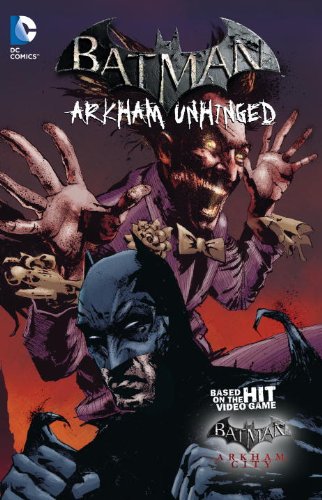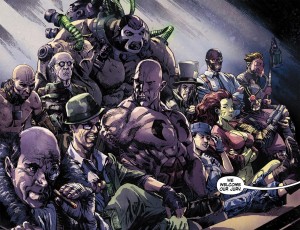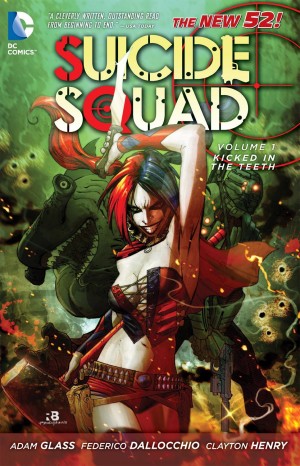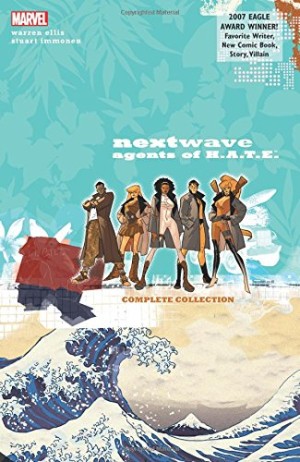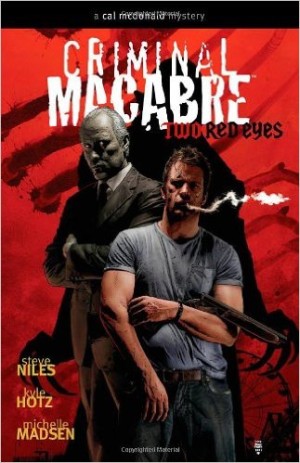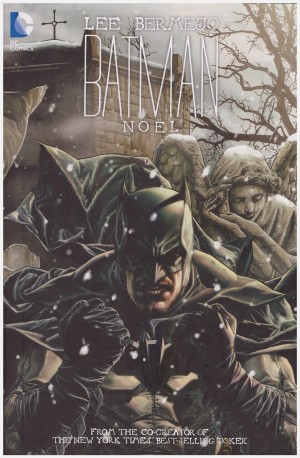Review by Karl Verhoven
We’re back in a walled-off section of Gotham behind which the city’s lunatics and villains have free rein to set up their own society. Writer Derek Fridolf’s brief was to tie in with the Arkham City video game, and over the previous two books he’s been settling the spotlight on assorted Batman villains. This volume opens with our first revisit as the Joker is placed on trial by Two-Face. “It’s because of the Joker that there’s an Arkham City. And we will find him guilty and punish him accordingly.”
It’s an intriguing idea, delving back into both Two-Face’s former legal career and events of previous volumes. Best of all, in a series that’s maintained a decent standard of artwork, that of Mico Suayan is the best to date. He’s a stickler for detail, has hints of classic old 19th century illustrators about his style, a strong sense of design and a resulting propensity for the iconic image. Unfortunately the story ultimately disappoints, but this is almost worth picking up for Suayan’s art alone. It provides the sample image.
Jheremy Raapack has an almost impossible task in following Suayan, but he acquits himself well, with the tale of the man whose architectural expertise constructed Arkham City. It features a great illo of a brutal armoured Batman, but it’s Azrael who’s the primary figure here in what’s ultimately an ordinary story.
It’s Black Mask’s turn in the spotlight next, a character whose participation in the associated video game was minor. He finds his new status of fugitive and victim very different from the career he’d carved out as gangleader, but is one adaptable villain. Fridolfs is effective here, turning in his best tale of the book, offering surprises until the end, and viable interaction with other villains. There’s nothing wrong with Eric Nguyen’s drawing, but it’s the least distinctive in the book.
Federico Dallocchio’s art takes Paul Gulacy as inspiration in places, with finely muscled figures, but has a greater propensity for emotional characterisation. This comes in handy when dealing with the young Bruce Wayne’s first meeting with Talia and her father. As this is out of continuity or alternate world, Fridolfs can make some alterations to the known story, yet follow the same broad themes as the original. It works well.
Despite being the man behind Arkham City, Hugo Strange has only been seen in passing, his villainous plans a mystery. Davide Fabbri draws the story that details how Strange rose to prominence and his ultimate ambition, but despite a fine final page it rather devolves into mundanity.
We return to the Joker for the concluding chapters, and the longest story in the book. He’s apparently dead, but set much in motion before this occurred. Fridolfs constructs a decent plot of the Joker’s corpse being a much desired object, and there’s three-quarters of a very good story here detailing the final days of Arkham City, all very nicely drawn in a scrubby style by Jason Shawn Alexander. The weakness is the insertion of recaps detailing previous Batman and Joker conflicts, which come across very much as padding and offer no new insight or background, which might be assumed to be the purpose. Otherwise it’s a pretty good way to end a series.
Oh wait, there’s a volume four.
